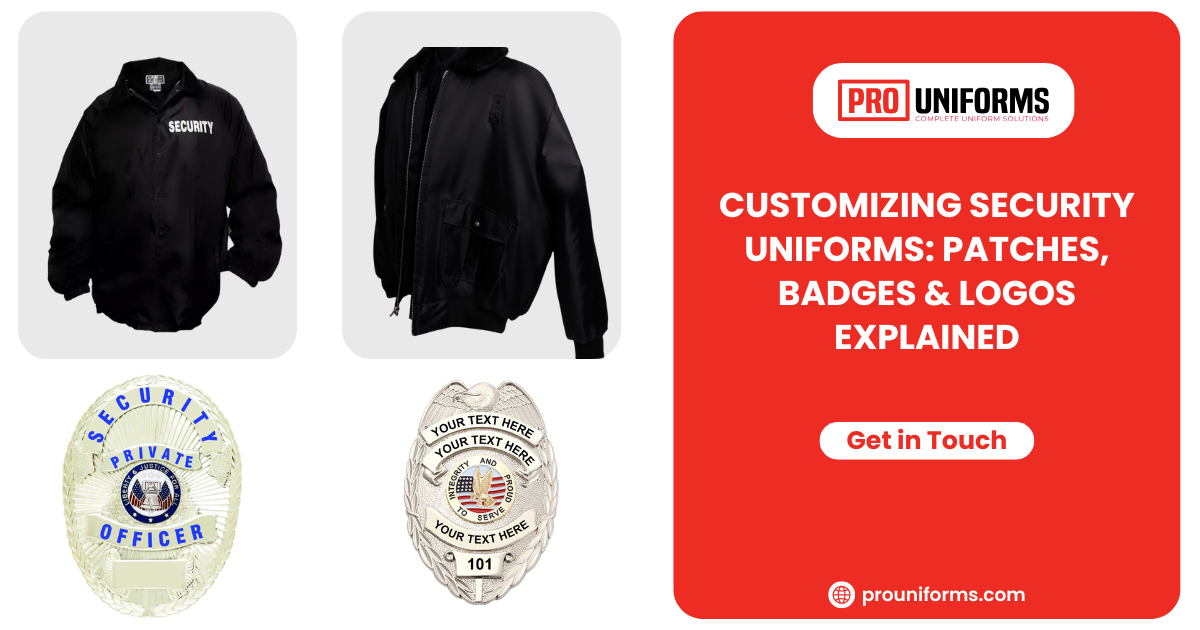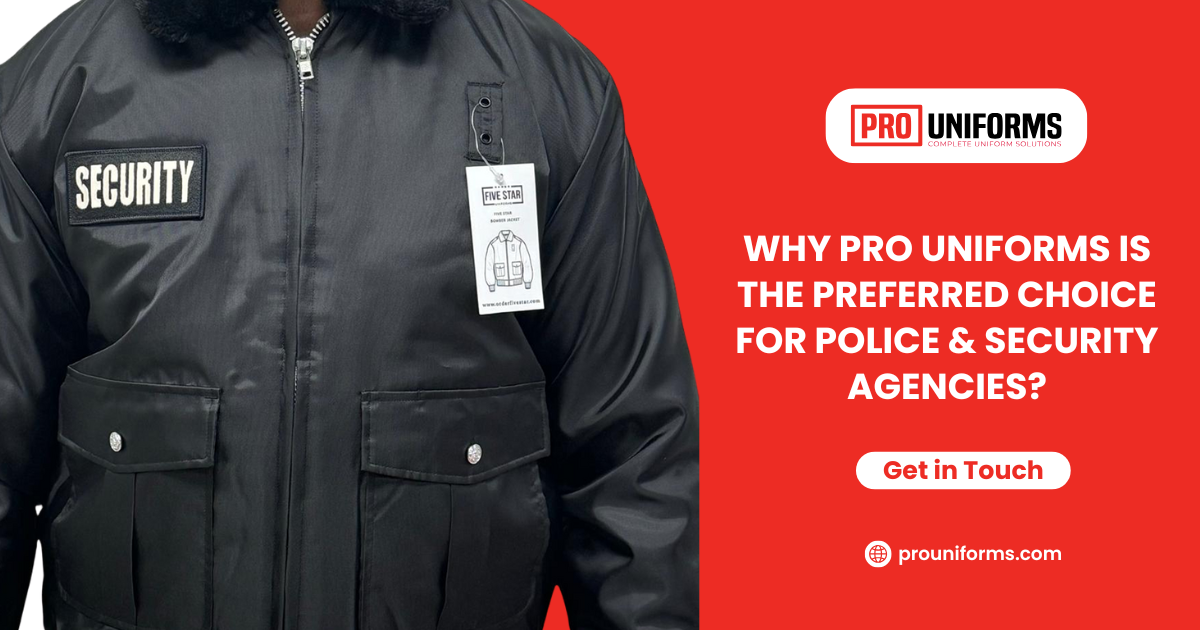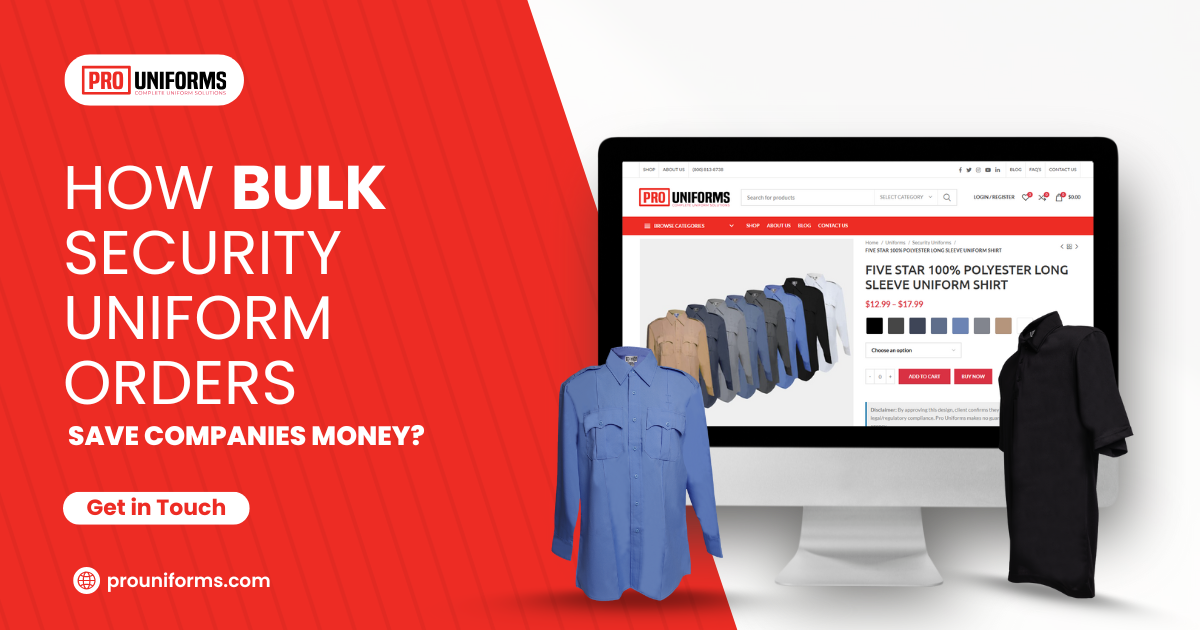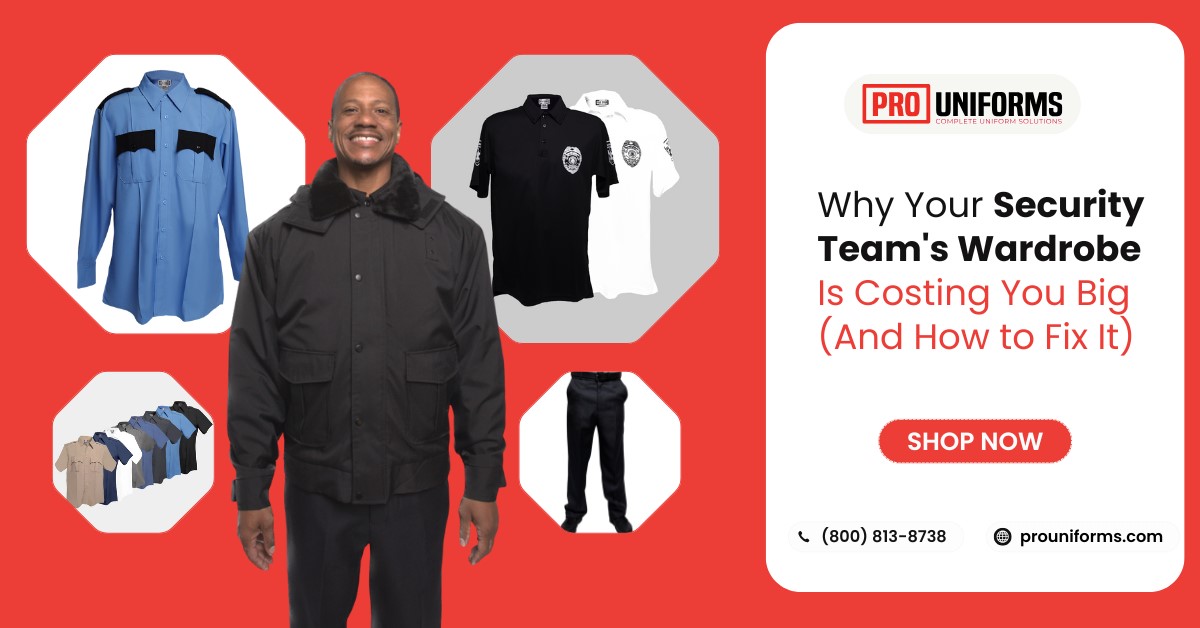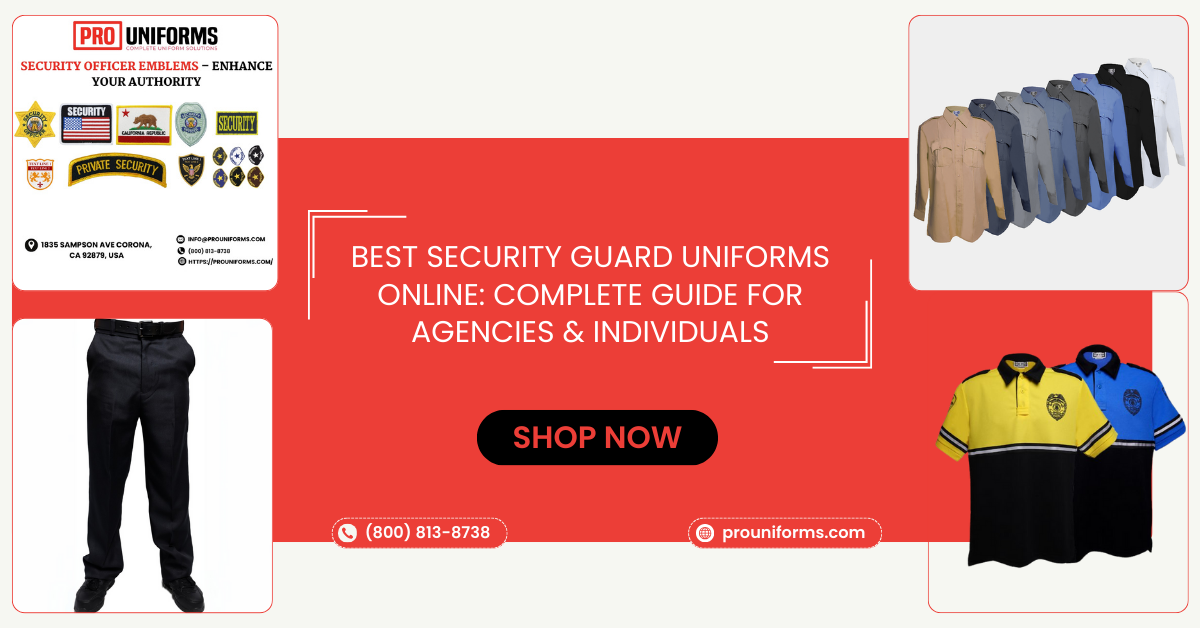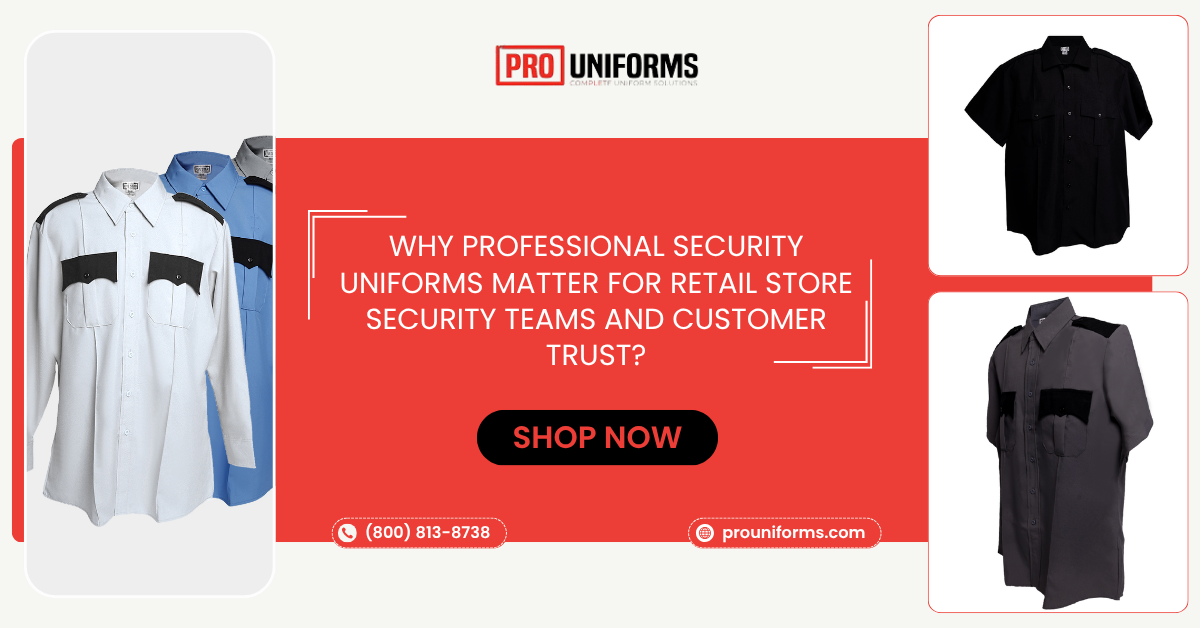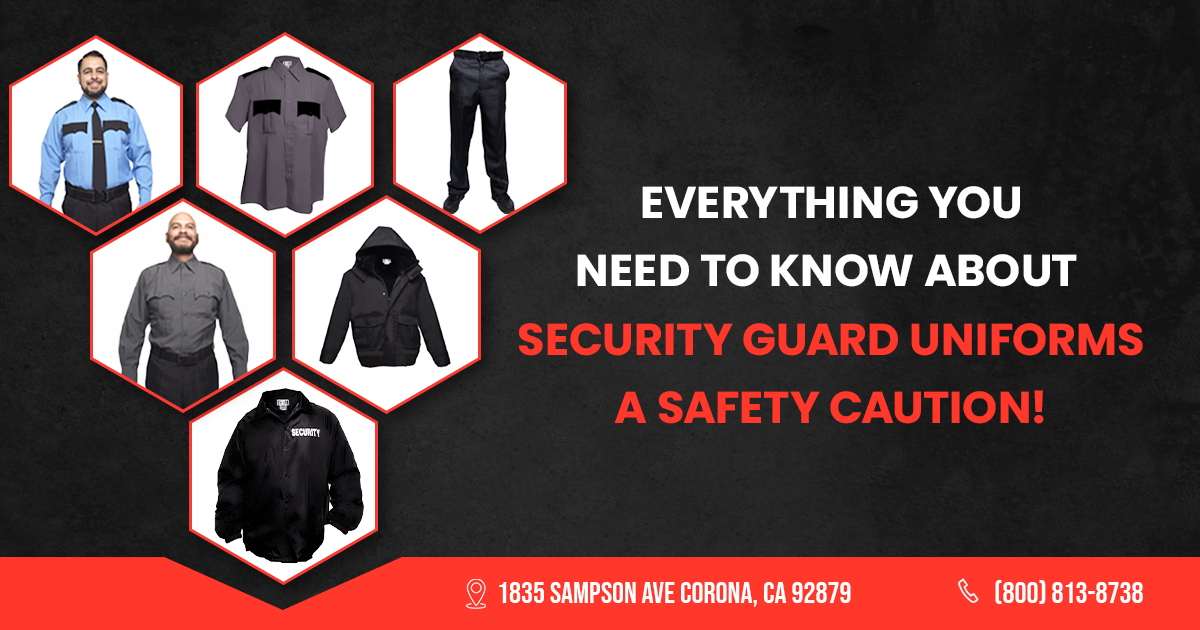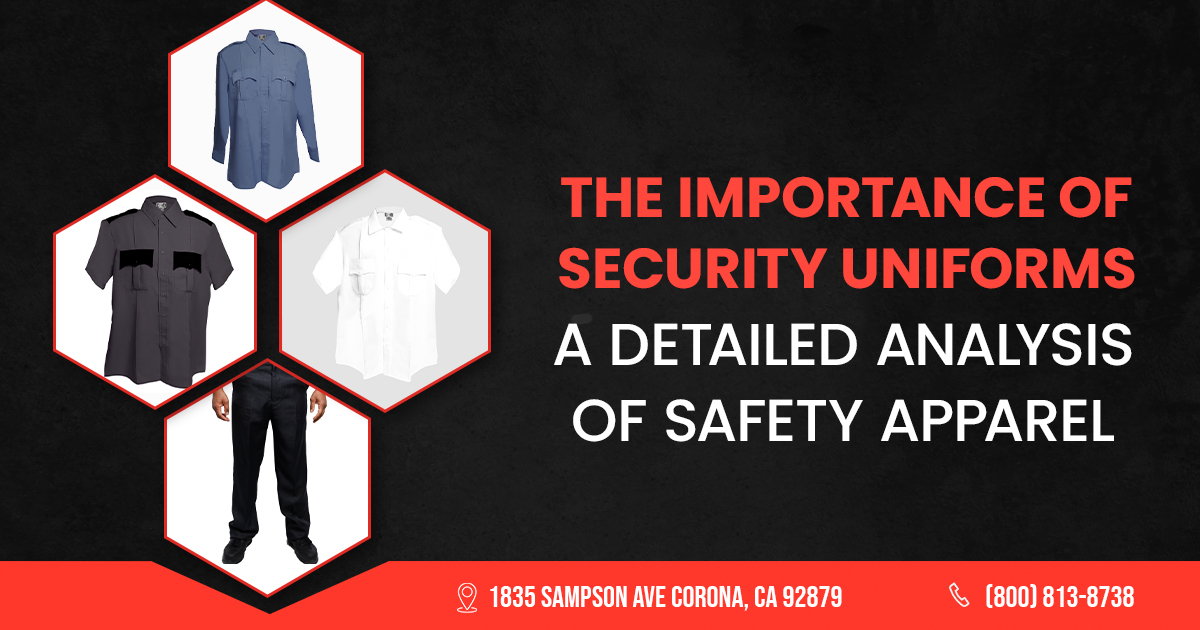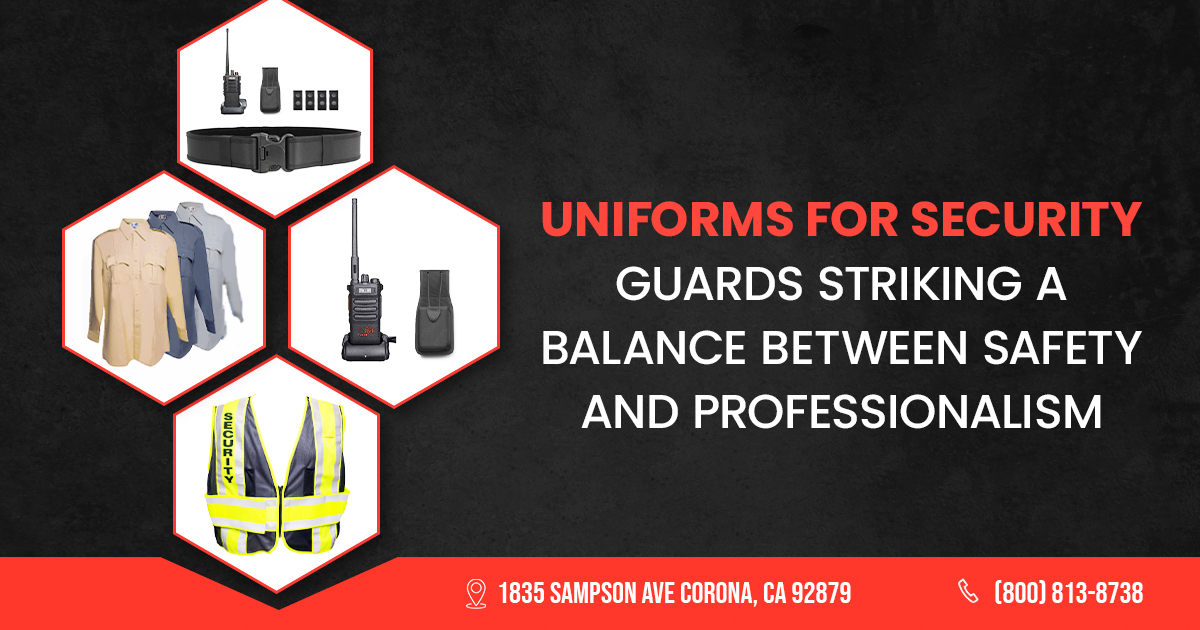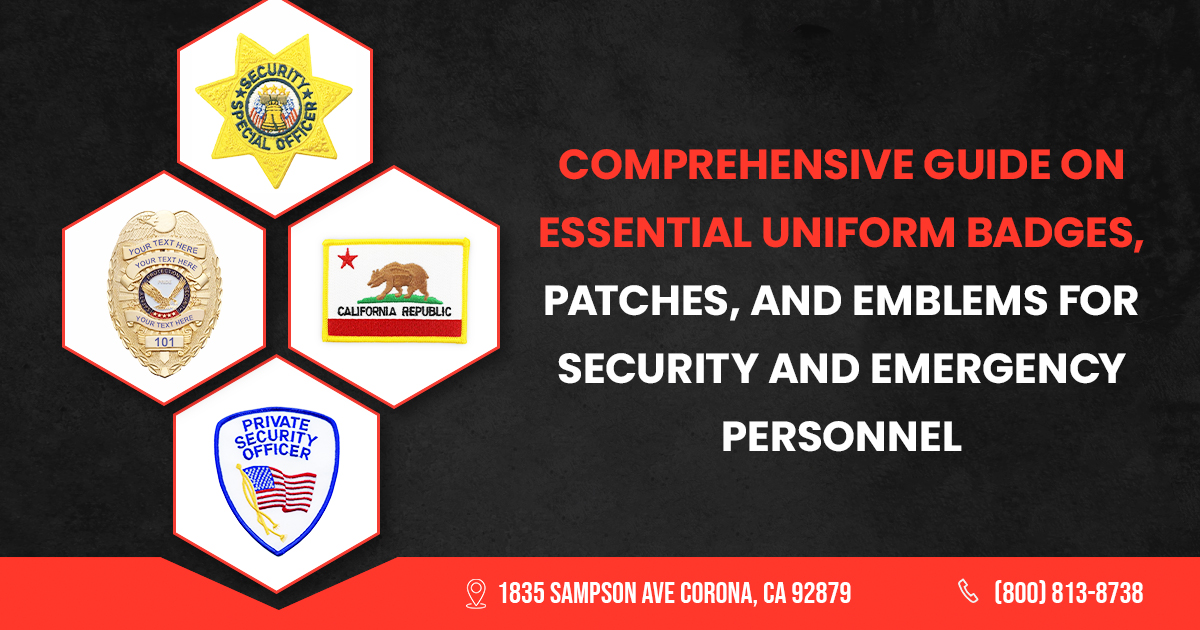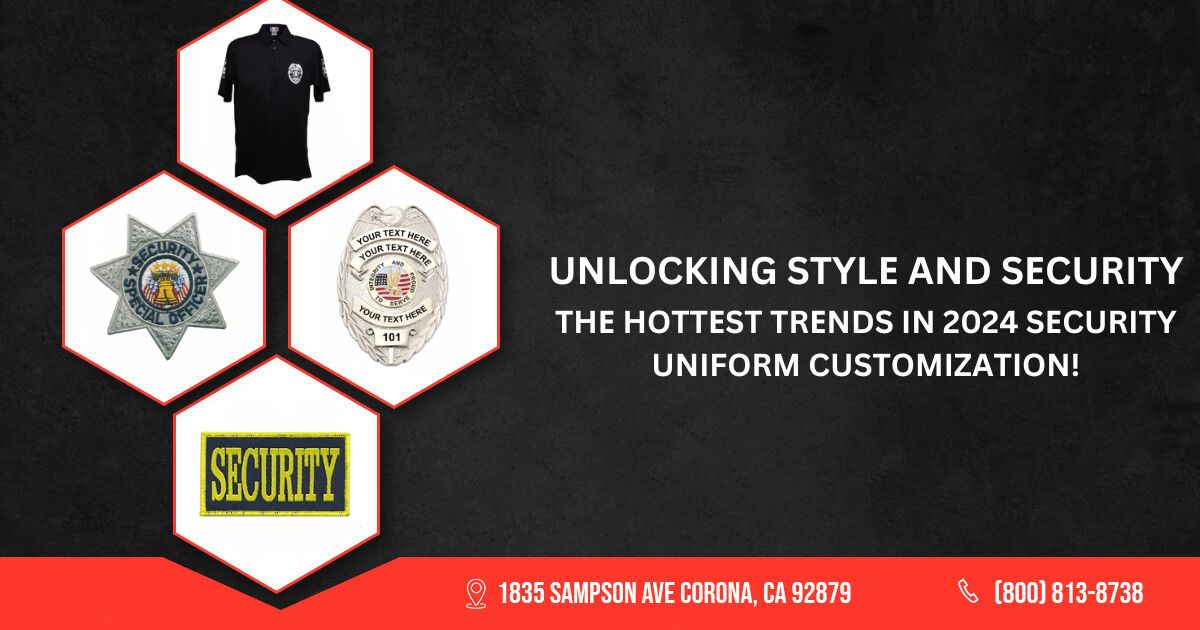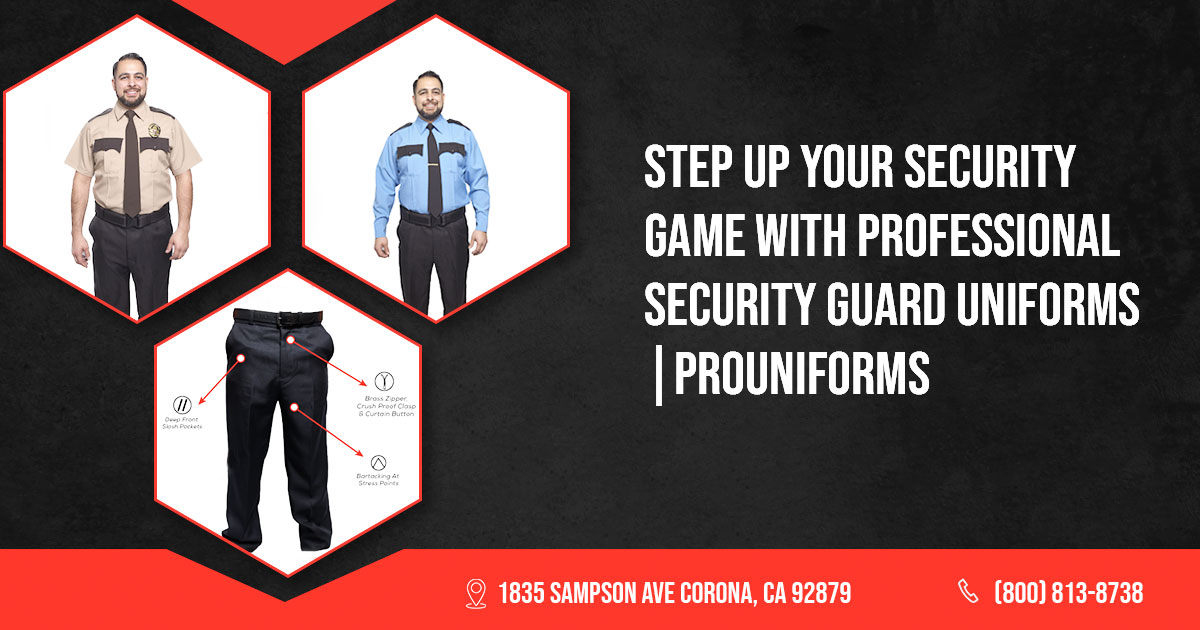Details define professionalism. In security, the right patch, badge, or logo isn’t just decoration – it becomes your signature.
When thinking about a security guard’s uniform, it’s often the first impression that matters most. A solid shirt or sharp jacket sets the tone, but the true story is told by the custom touches – badges, patches, and logos. These elements signal authority, build trust, and help every guard stand out while blending into daily work scenes.
This guide breaks down everything – types of patches, badge styles, logo placements, and key products – so anyone can confidently choose the best details for their security uniform, whether for personal use or outfitting an entire team.
Why Customization Matters?
Trust isn’t earned overnight. A security guard’s uniform, properly marked and branded, can ease worries, answer questions, and make identification simpler. With the right patch or metal security badge, clients and the public know exactly who’s there to help.
Patch Types: The Details That Stand Out
Custom security patches aren’t just bits of cloth – they’re identity tags. They might display company names, roles (such as “Officer” or “Loss Prevention”), or special units.
Common patch features:
- Durable and fade-resistant materials (often polyester blends for daily wear)
- Clear labeling (company, unit, rank)
- Secure stitching for heavy-duty use
From standard rectangular patches to specialized shapes (shields, stars), the designs suit every need. Companies often choose custom security patches to make guards easy to spot in a crowd or help team members recognize each other faster.
Popular patch categories:
- Shoulder emblems
- Breast patches with title or name
- Unit or department identifiers
Badge Styles: Authority and Identification
Security badges walk a fine line between practicality and formality. The iconic shine of a metal security badge signals professionalism and readiness.
Classic Badge Choices
- Security Enforcement Officer Gold Shield Badge: Lightweight, gold-finished metal. Its clear finish helps guards stand out while remaining comfortable.
- Security Enforcement Officer Silver Shield Badge: Silver rhodium plating, classic shield shape, and readable “SECURITY ENFORCEMENT OFFICER” text. Good for official environments needing clear identification.
- Security Officer Badge: Silver finish, traditional shield design. Marked “Officer – Private Security,” blending in formal and everyday scenes.
- Security Special Officer Gold 7-Point Star Badge: A distinct 7-point star with blue highlights and patriotic symbols. Ideal for roles where visibility and authority are essential.
- Security Officer Gold Hat Badge: Smaller, designed for hats with gold lettering on a blue background.
Badges can be numeric or symbolic – some even include department logos, American flags, or the Liberty Bell. They’re built for lasting use and easy cleaning. Placement is typically chest-level, but specialty badges may go on hats or jackets for added visibility.
Specialty Badges for Every Role
The most effective security guard badges reflect the exact work environment. Not all security jobs are alike, so uniform badges should fit the specific task:
- Loss prevention badge: Used for staff dedicated to retail or asset protection. These typically specify “Loss Prevention” and might have extra security graphics for added clarity.
- Custom nameplates: Nameplates show personal details – first name, last name, or staff ID. Useful when guards need to be recognized quickly.
Custom badges and nameplates are available in many designs, including engraved metal or durable plastic. For enhanced branding, some companies opt for logo-specific badges that reinforce company identity wherever the guard goes.
Logo Placement: Making Branding Clear
Logos on uniforms help reinforce brand awareness and unify the team’s look. Placement depends on the garment and the statement being made:
- Shoulder patches: High visibility, great for logos and company names. Worn on uniform shirts, jackets, and windbreakers.
- Chest logos: Typically embroidered above the pocket or directly on the left chest. These can include company emblems, shield icons, or unit numbers.
- Headwear logos: Beanies and caps embroidered with company marks provide instant recognition.
Choosing the right spot for a logo keeps branding consistent across all uniform pieces. For clients or employees, seeing the same logo from shirt to beanie builds trust and signals attention to detail.
Top Uniform Products Featuring Customization
Pro Uniforms offers a range of garments and accessories compatible with all badge, patch, and logo needs – all designed for security, comfort, and easy branding.
Uniform Shirts
- Five Star 100% Polyester Short Sleeve Uniform Shirt: Durable, crisp-looking, and easy to embroider with patches or logos. Great for indoor and warm-weather security teams.
- Five Star 100% Polyester Long Sleeve Uniform Shirt: Offers extra protection and formality. Ample room for chest and sleeve patches.
- Five Star Two Tone Long Sleeve Uniform Shirt: Built for guards who want distinctive style and professional features.
Outerwear
- Five Star Bomber Jacket & All Season Deluxe Bomber Jacket: Lightweight yet warm. Designed for easy logo addition or large arm emblems.
- Five Star Windbreaker with Security ID: Built for rain and wind. The “SECURITY” ID patch is highly visible in tough conditions.
Accessories
- Five Star Beanie with Security ID: Offers a warm, comfortable fit with embroidered security identifiers.
- Five Star Plain Caps: Perfect for adding beanie or cap logos – simple yet highly customizable.
How to Choose: Step-by-Step Customization
- Identify your role and environment (e.g., mall security, loss prevention, patrol).
- Select uniform basics (shirt, jacket, hat).
- Pick badge style (gold or silver metal security badge; star or shield).
- Add patches (shoulder, chest, or specialty patch).
- Customize with a logo (embroidered or printed).
- Order matching accessories for headwear and cold weather.
Quick Tips for Effective Customization
- Always match badge and patch colors to uniform tones for a unified look.
- Consider double-stitching patches for long-term durability.
- Nameplates should be clear, easy to read, and scratch-resistant.
- Size matters – oversized patches might work for jackets, but smaller logos suit caps and shirts.
- Placement consistency across team outfits boosts brand recognition.
The New Standard in Security Uniforms
Today’s security work calls for more than just a visible presence. It calls for uniforms built for recognition, reliability, and pride – made stronger with customized patches, high-visibility badges, and logos that tell a real story. With options for every need – from basic shirts to advanced outerwear – security professionals can finally wear uniforms that reflect their best selves.
A Final Thought: Upgrade Your Team’s Look
Ready to take your security uniforms to the next level? Explore Pro Uniforms for advanced customization – security guard badges, special units like loss prevention badges, and standout metal security badge options. Equip teams with uniforms they’ll be proud to wear, knowing every detail represents professionalism.
